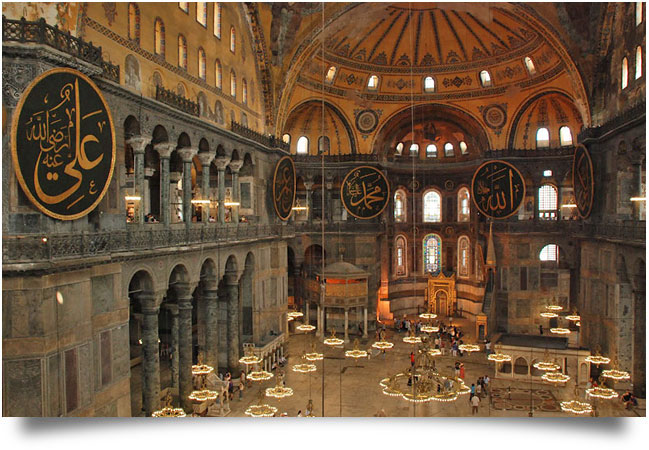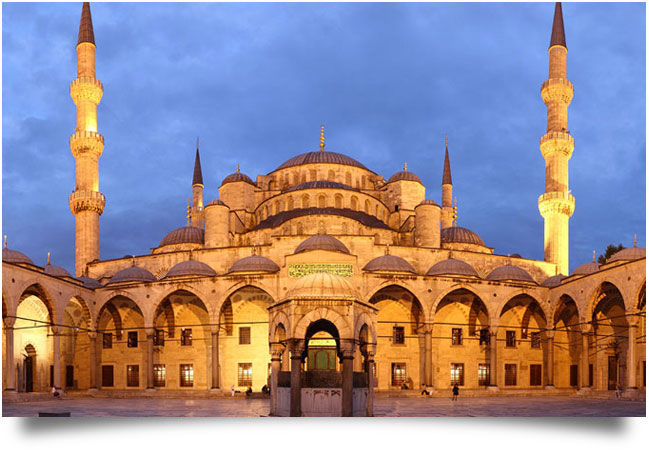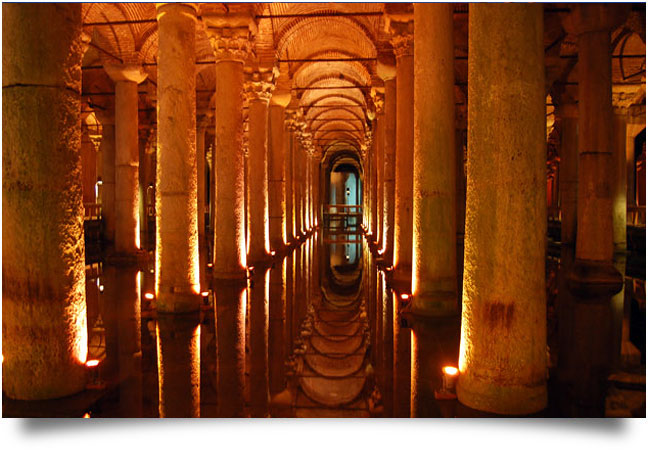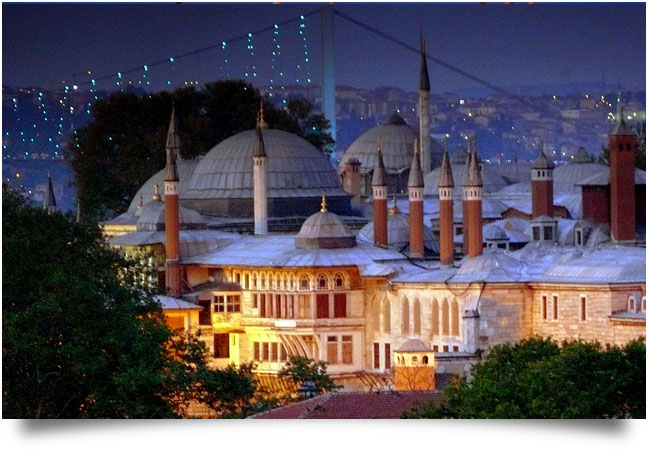
 |
||||||||||||||
Holy Wisdom, Turkish Ayasofya) is a former patriarchal basilica, later a mosque, now a museum, in Istanbul, Turkey. Famous in particular for its massive dome, it is considered the epitome of Byzantine architecture and one of the most beautiful buildings in the world. It was the largest cathedral in the world for nearly a thousand years, until the completion of the Medieval Seville Cathedral in 1520. |
 |
The Blue Mosque was commissioned by Sultan Ahmet I when he was only 19 years old. It was built near the Hagia Sophia, over the site of the ancient hippodrome and Byzantine imperial palace (whose mosaics can be seen in the nearby Mosaic Museum). Construction work began in 1609 and took seven years. The mosque was designed by architect Mehmet Aga, whose unfortunate predecessor was found wanting and executed. Sultan Ahmet was so anxious for his magnificent creation to be completed that he often assisted in the work. Sadly, he died just a year after the completion of his masterpiece, at the age of 27. He is buried outside the mosque with his wife and three sons. The original mosque complex included a madrasa, a hospital, a han, a primary school, a market, an imaret and the tomb of the founder. Most of these buildings were torn down in the 19th century. Inside, the high ceiling is lined with the 20,000 blue tiles that give the mosque its popular name. Fine examples of 16th-century Iznik design, the oldest tiles feature flowers, trees and abstract patterns. The overall effect is one of the most beautiful sights in Istanbul. The Iznik tiles can be seen in the galleries and and on the north wall above the main entrance. The remaining tiles, which have a less delicate design, were made in Kütahya. |
 |
The Basilica Cistern, located in the crowded Emin?nü district of Istanbul next to the Hagia Sophia, was built to provide water for the city of Istanbul during the reign of Emperor Justinian I in the 6th century CE. This cistern is an underground chamber of 138 x 64.6 metres. The large space is broken up by a forest of 336 marble columns, which are aesthetically supported by strong columns and arches. The ceiling vaults, known as Manast?r Tonozu (cloister vault), are built without using a mould. The cistern is surrounded by a firebrick wall with a thickness of 3.5 meters and is coated with a special mortar to make it waterproof. |
 |
Topkapi Palace was not only the residence of the Ottoman sultans, but also the administrative and educational center of the state. Initially constructed between 1460 and 1478 by Sultan Mehmed II, the conqueror of Constantinople, and expanded upon and altered many times throughout its long history, the palace served as the home of the Ottoman sultans and their court until the middle of the 19th century. In the early 1850s, the palace became inadequate to the requirements of state ceremonies and protocol, and so the sultans moved to Dolmabah?e Palace, located on the Bosphorus. But despite this move, the royal treasure, the Holy Relics of the Prophet Muhammad, and the imperial archives continued to be preserved at Topkapi, and?since the palace was the ancestral residence of the Ottoman dynasty as well as the place where the Holy Relics were preserved? Topkapi continued to play host to certain state ceremonies. Following the abolishment of the Ottoman monarchy in 1922, Topkapi Palace was converted into a museum on 3 April 1924, on the order of Mustafa Kemal Atatürk. |
 |
DISCOVERY ISTANBUL WITH ROMANTIC HOTEL |
 |
 |
 |

|
|

|